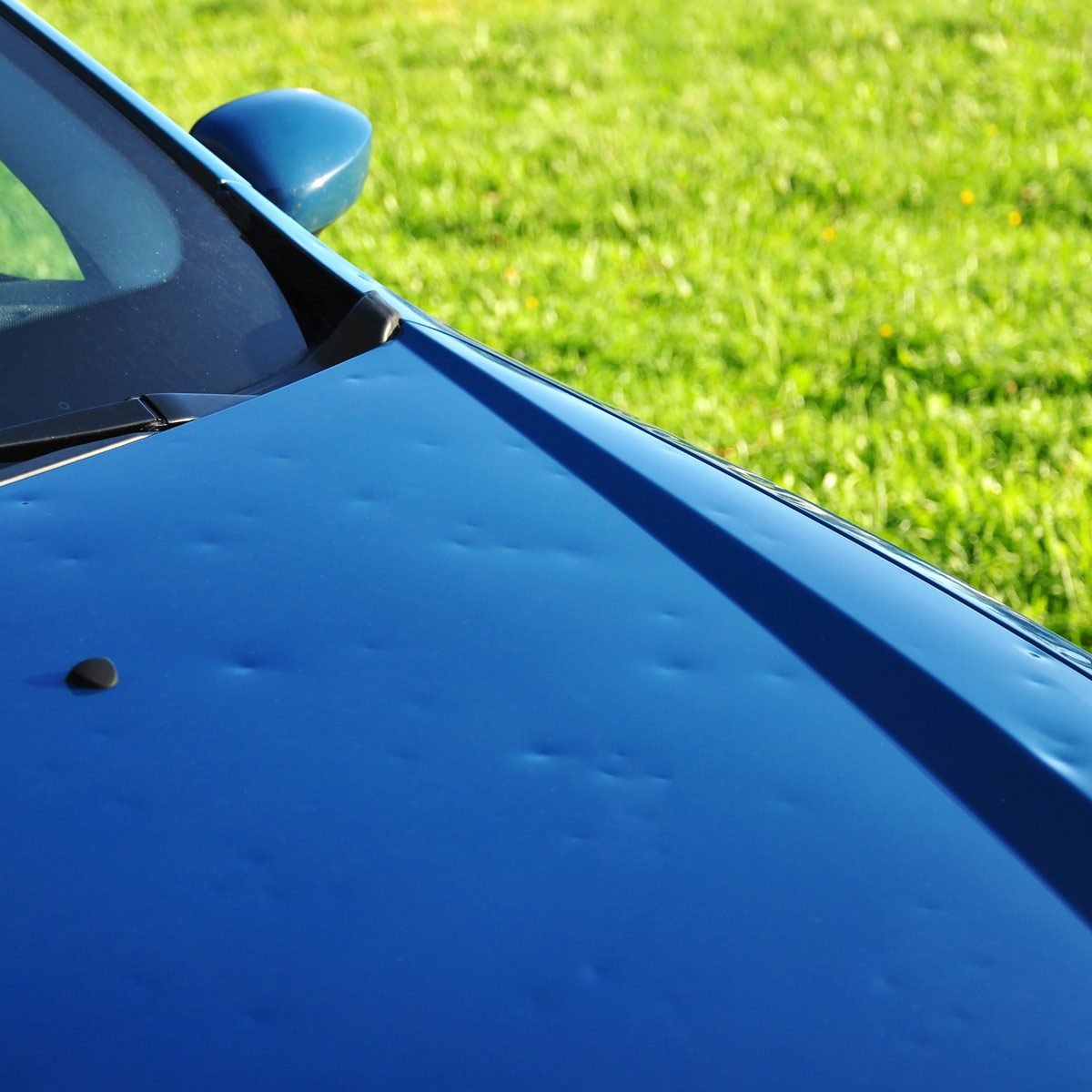Wondering if you can fix hail damage to your car yourself? It may be possible if you have the right tools and a lot of patience.

Can I Fix Hail Damage to My Car?

If you care about keeping your vehicle in good shape, few things are more disheartening than seeing a patchwork of dents spread over your roof, hood and trunk after a hailstorm. Without the protection of a garage or carport, this sort of damage is always a possibility when hailstones start falling. Here’s how much hail damage impact a car’s value.
Once the damage is done, you might think the only option is expensive bodywork done by professionals. Not necessarily so. If your insurance policy doesn’t cover you for hail damage repair, you might be able to restore your vehicle to nearly perfect condition with the right tools and approach.
That said, there are certainly cases where the extent of the hail damage is beyond what can be practically fixed in a driveway. A trip to a body shop is the only way forward in those situations. Learn how to tell the difference, and see for yourself how much good you can do when fixing hail damage to your car.
Plus, these are the 15 things you should never do to your car.
On This Page
Method 1: Heating and Cooling
One big problem with dents in cars is that they always stretch the metal, at least a little. That’s why some people try the heating and cooling approach using a hair dryer or heat gun on a medium to low setting, followed by dry ice applied directly to the dent. The idea is that the heat expands the metal slightly, then the rapid cooling contracts it quickly, causing the dented metal to pop back out.
In practice, results of this approach are mixed, and plenty of experts will tell you not to try it. Too much heat could damage your paint and make the problem worse. If you do try this method, be extra cautious with heat application. Don’t make the vehicle’s surface any hotter than you can touch.
Method 2: Pushing Tools
Most bodywork specialists use long-handled, thin metal pushing tools for hail damage repair. Usually sold in kits, these tools are designed to reach inside or under body panels, using carefully applied leverage, gently, gradually and repeatedly pushing on the underside of the dent until it disappears.
Rather than applying continuous pressure, these tools are usually designed to push in a quick, gentle pulsing pattern, removing the dent a tiny bit at a time. This is much easier said than done, and if you’re not good with your hands and understand the value of finesse, don’t try it.
Method 3: Pulling Tools
Many DIYers have had great results with pulling-based dent removal kits like this one. They include an adjustable pulling handle, a glue gun and a wide variety of plastic plungers designed to anchor to the dented area of the vehicle. They’re certainly easier and safer to use than the pushing tools used by bodywork pros. But like pushing tools, pulling tools demand an extremely gentle, careful hand to get good results.
A plastic plunger of the correct shape and size is glued into the dented area. Then the handle is attached to it, allowing gentle outward pressure to be applied. Similar to push-based repairs, the pulling needs to happen in a long series of tiny applications of pressure, not one continuous pull.
Up next: Vehicle repairs and maintenance tasks don’t always have to be done in the shop. You can easily do these 105 super-simple car repairs in your garage.



















